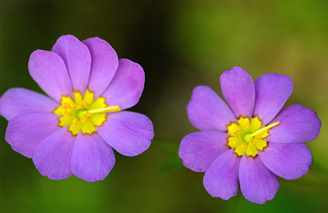 DNA analysis has revealed the the fungus that causes white nose syndrome in bats is not closely related to the other Geomyces species found in caves. The researchers, who are with the US Forest Service, say that the fungus should be in the genus Pseudogymnoascus instead.
DNA analysis has revealed the the fungus that causes white nose syndrome in bats is not closely related to the other Geomyces species found in caves. The researchers, who are with the US Forest Service, say that the fungus should be in the genus Pseudogymnoascus instead.
The research will be published in the journal Fungal Biology. The authors note that the difference between the white nose fungus and native fungal species supports the idea that the fungus is not native to North America.
“This research represents more than just a name change,” said Bat Conservation International director of conservation Mylea Bayless in a US Forest Service press release. “Understanding the evolutionary relationships between this fungus and its cousins in Europe and North America should help us narrow our search for solutions to WNS.”
Read the Fungal Biology paper abstract here. (Fee or subscription required for the full article.)
Read the US Forest Service press release here.
Read the Bat Conservation International newsletter article here.
Photo: courtesy USGS National Wildlife Health Center

 Bats move around a lot. Some bats migrate. Some bats move from summer or maternity roosts to winter hibernation caves. Finding out how bats move has suddenly become extremely important. White nose syndrome seems to be following the known patterns of bat movement. But just so little is known.
Bats move around a lot. Some bats migrate. Some bats move from summer or maternity roosts to winter hibernation caves. Finding out how bats move has suddenly become extremely important. White nose syndrome seems to be following the known patterns of bat movement. But just so little is known. Nineteen new species have been added to Nova Scotia’s list of species at risk, bringing the total listed in the province to 60, according to a
Nineteen new species have been added to Nova Scotia’s list of species at risk, bringing the total listed in the province to 60, according to a  Because of white nose syndrome (WNS), counting bats is more important than ever. In regions where WNS has already struck, wildlife researchers are tracking survival rates. In regions where it hasn’t struck, wildlife researchers are collecting baseline data.
Because of white nose syndrome (WNS), counting bats is more important than ever. In regions where WNS has already struck, wildlife researchers are tracking survival rates. In regions where it hasn’t struck, wildlife researchers are collecting baseline data. Thirty bats from New York and Vermont, some of which were visibly infected with white nose syndrome (WNS), were moved to a specially-prepared military bunker in Maine to spend the winter. Nine bats survived, a higher percentage than would have been expected if they had been left in the wild. Those bats were returned to the locations where they were found.
Thirty bats from New York and Vermont, some of which were visibly infected with white nose syndrome (WNS), were moved to a specially-prepared military bunker in Maine to spend the winter. Nine bats survived, a higher percentage than would have been expected if they had been left in the wild. Those bats were returned to the locations where they were found.
 A tri-colored bat, found dead in Table Rock State Park in the northwestern corner of South Carolina, has been confirmed to have white nose syndrome (WNS), the
A tri-colored bat, found dead in Table Rock State Park in the northwestern corner of South Carolina, has been confirmed to have white nose syndrome (WNS), the 